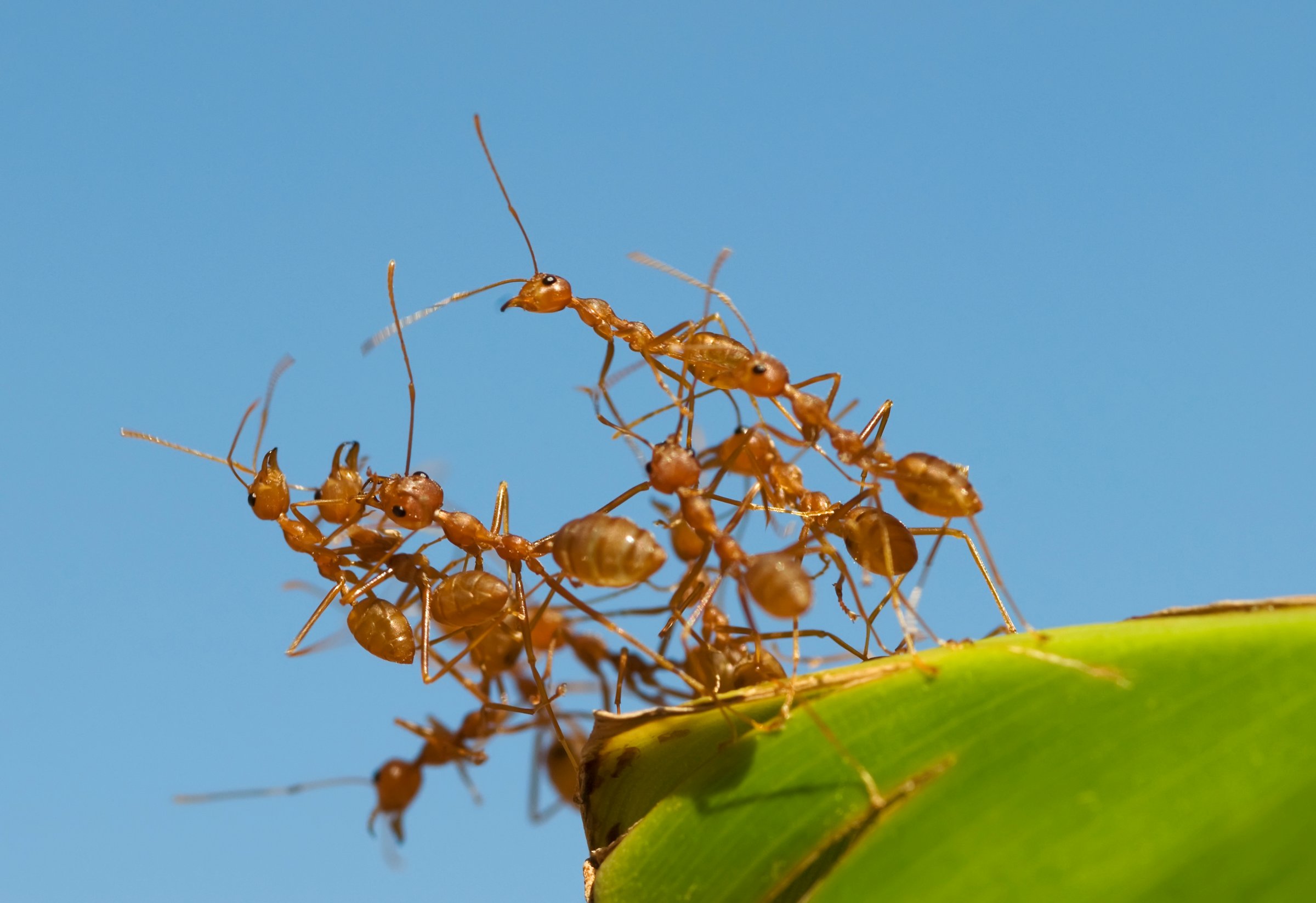
Scientists have long known that colonies of fire ants will join themselves into a collective ball during floods to better their chances of survival, but their ability to form this structure has largely remained a mystery. Now, though, a team of engineers from the Georgia Institute of Technology has studied the properties of the ant ball to discover that the insects strategically placed themselves in the formation depending on their size — findings that could inspire new design methods for material scientists and robotic technicians.
The study, which was published in the Journal of Experimental Biology, revealed that the ants use adhesive pads on their legs to link together. They then position themselves perpendicularly in the formation, with the smaller ants lodging between bigger ants to maximize efficiency of space.
Radhika Nagpal, a robot designer at Harvard University, believes that the discovery could help inspire simple robots that link together to solve a problem. She adds that the responsive robots could come in handy in extreme situations when there are limited resources. “Imagine robots that need to construct a barrier or patch a hole during a disaster response,” Nagpal explains in the journal Nature.
The team of researchers thinks that along with helping in disaster responses, the discovery could also contribute to the design of “smart” materials that are able to respond to changes in the environment such as temperature and light.
More Must-Reads from TIME
- Donald Trump Is TIME's 2024 Person of the Year
- Why We Chose Trump as Person of the Year
- Is Intermittent Fasting Good or Bad for You?
- The 100 Must-Read Books of 2024
- The 20 Best Christmas TV Episodes
- Column: If Optimism Feels Ridiculous Now, Try Hope
- The Future of Climate Action Is Trade Policy
- Merle Bombardieri Is Helping People Make the Baby Decision
Contact us at letters@time.com